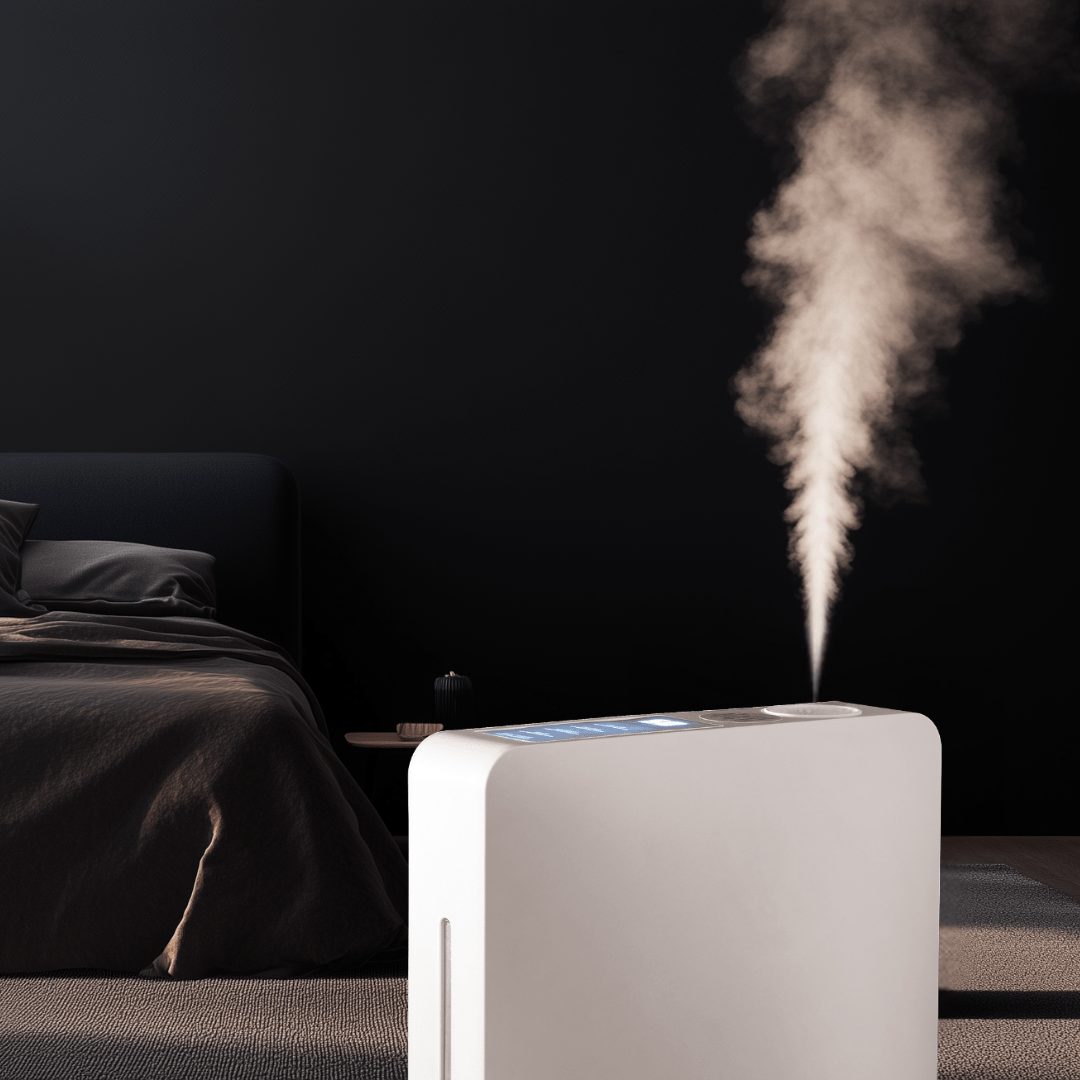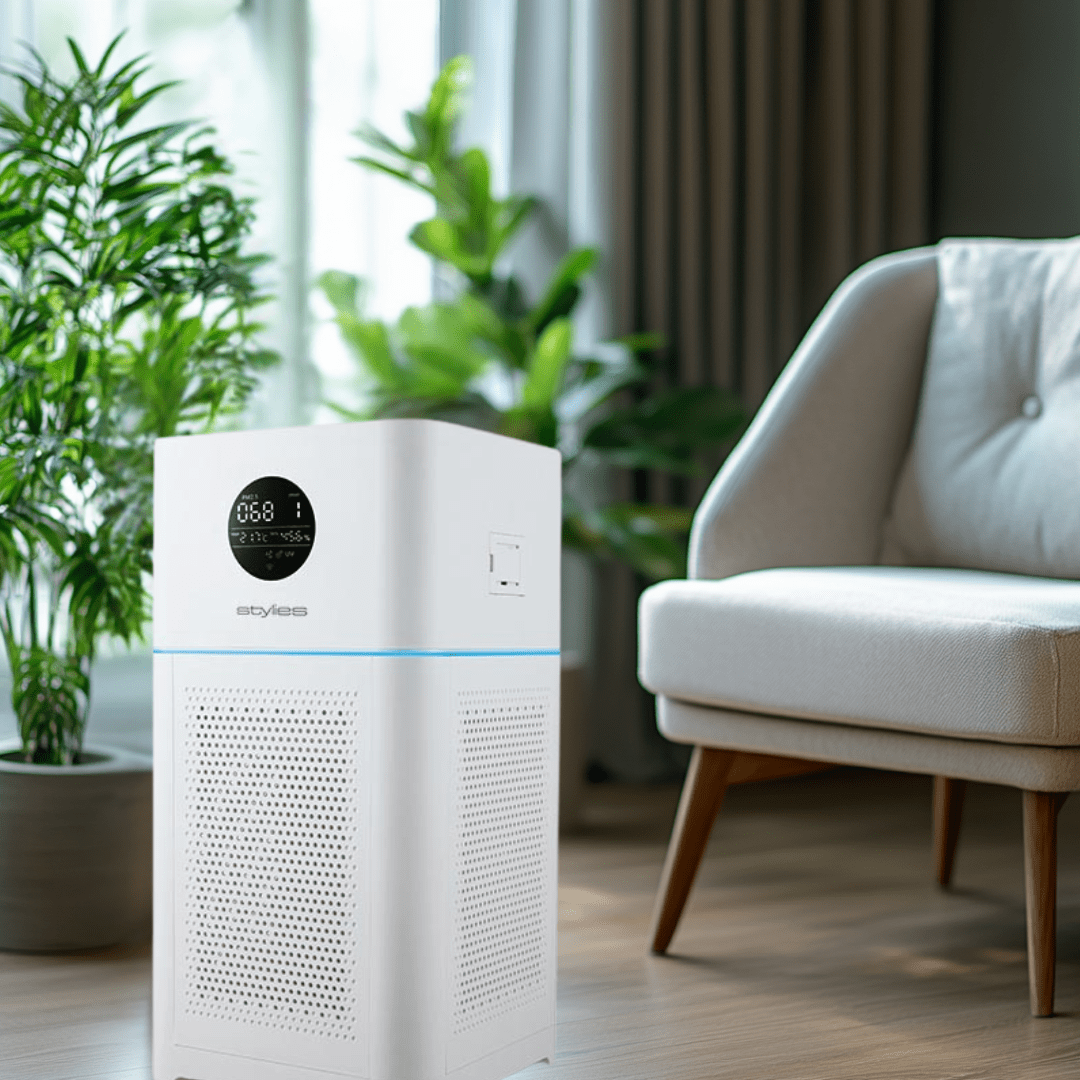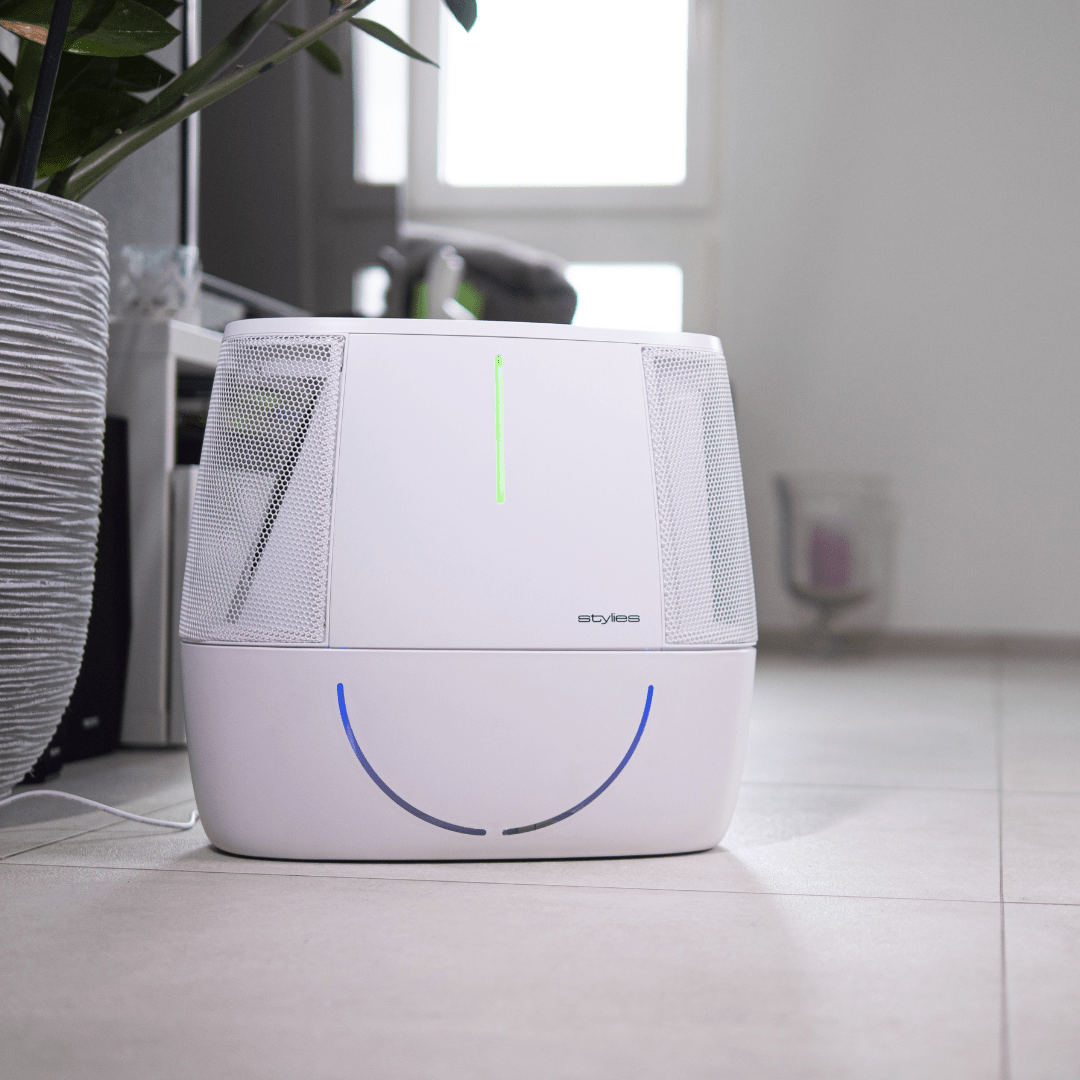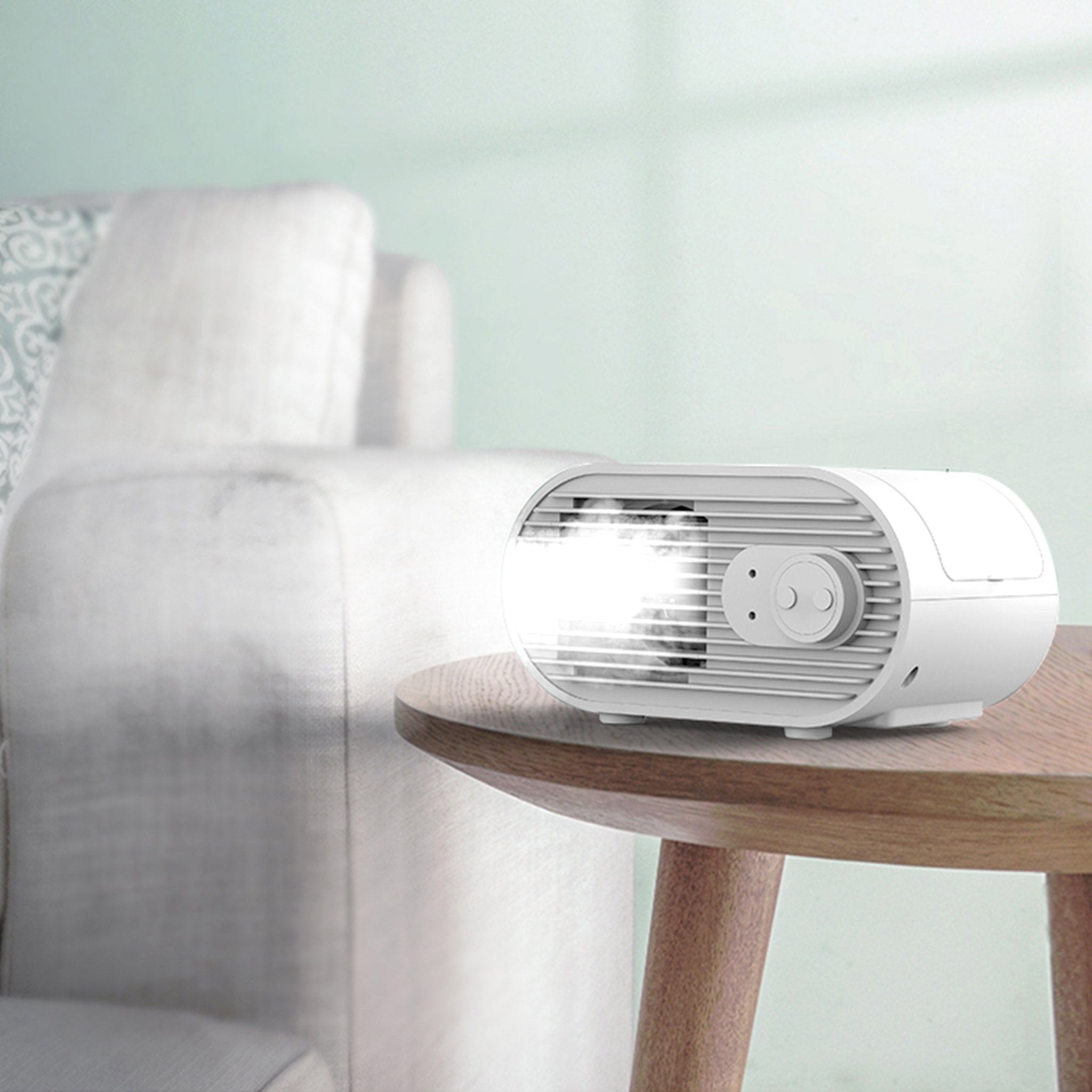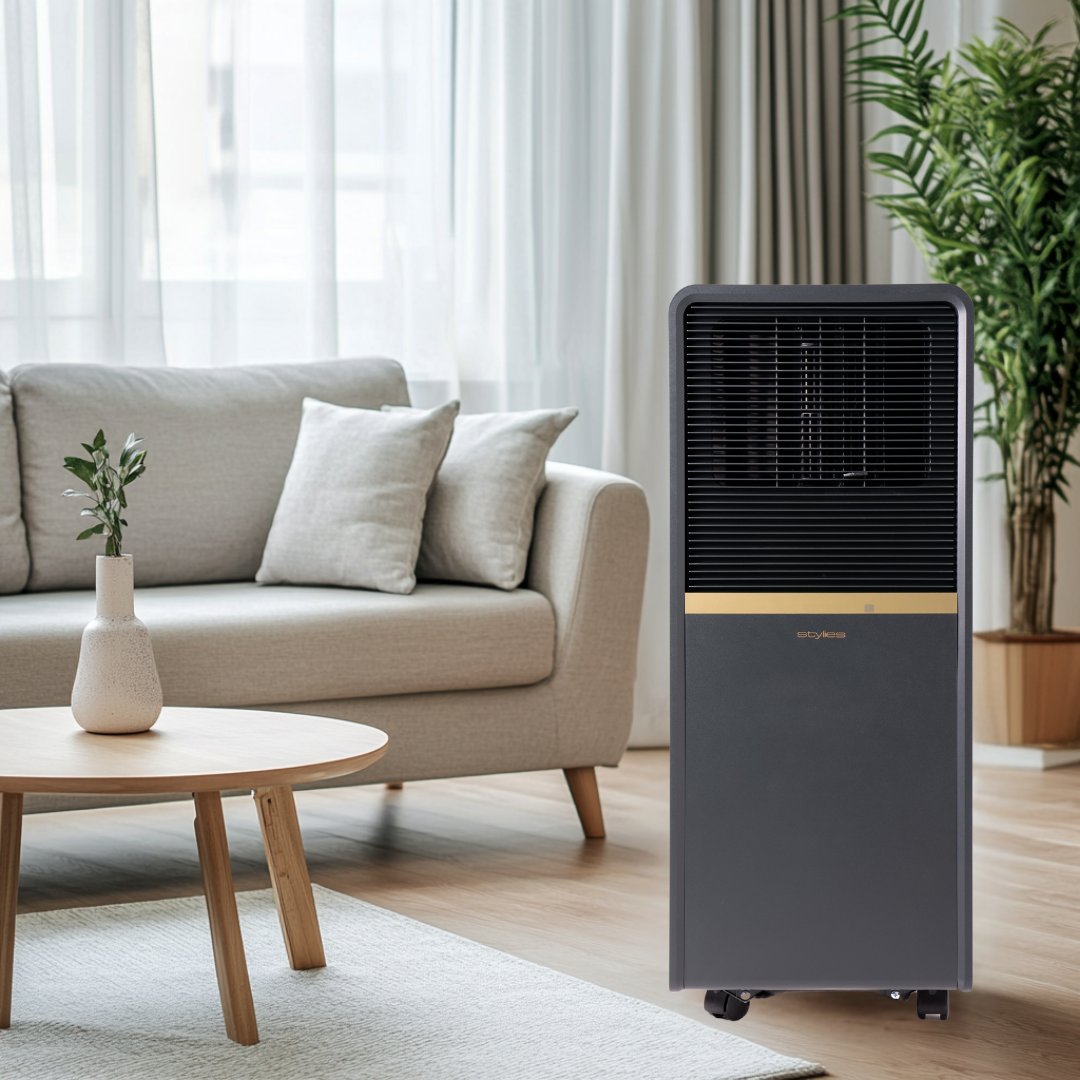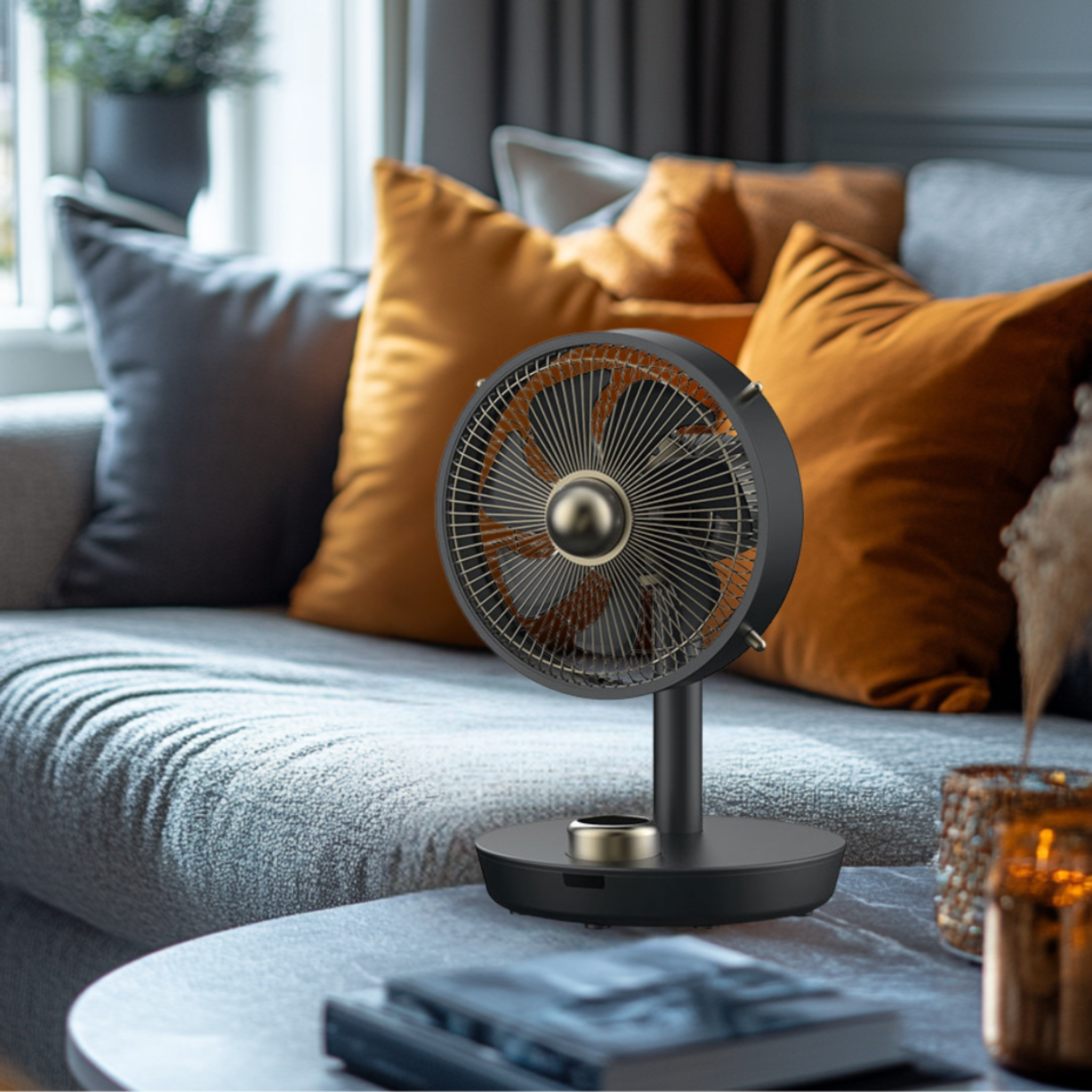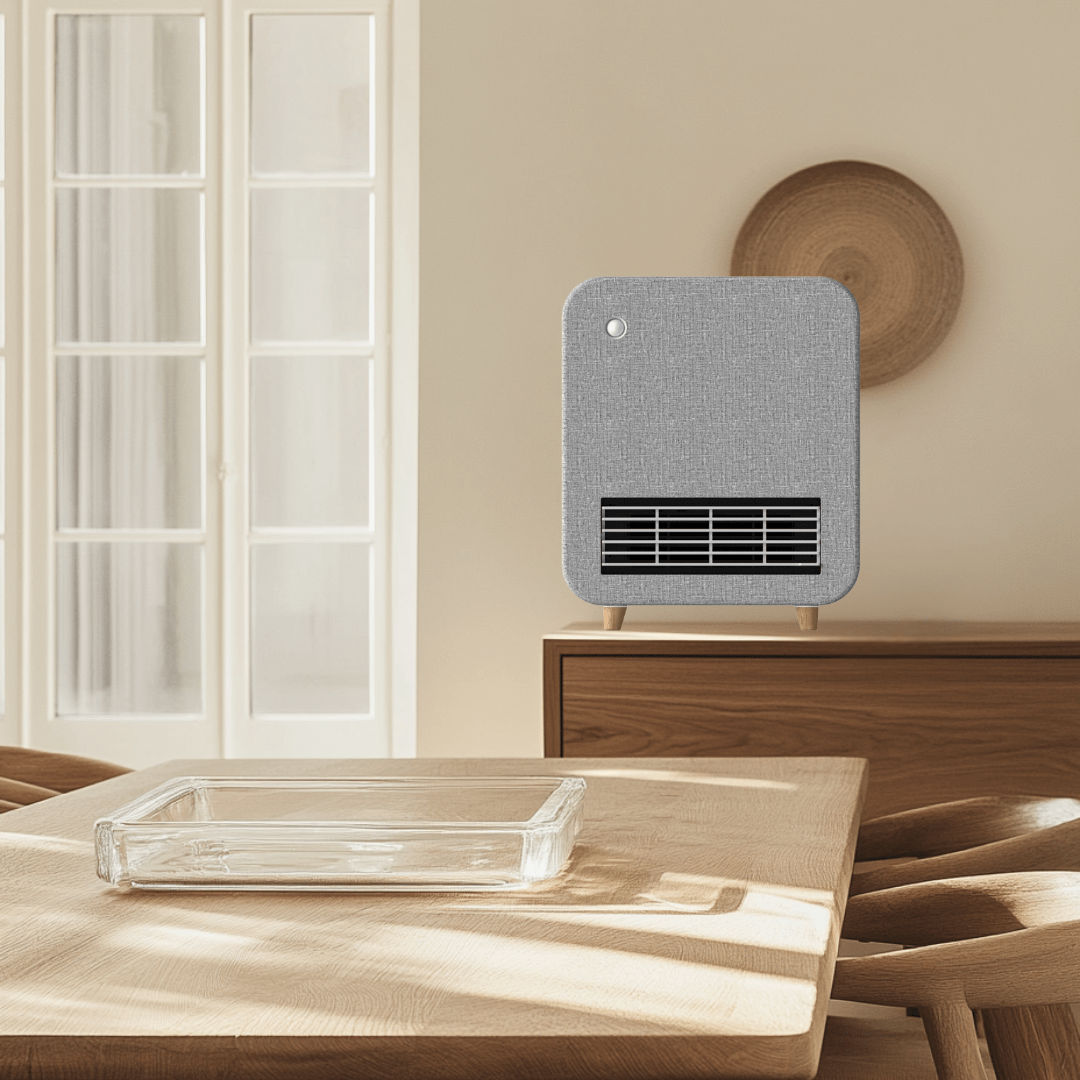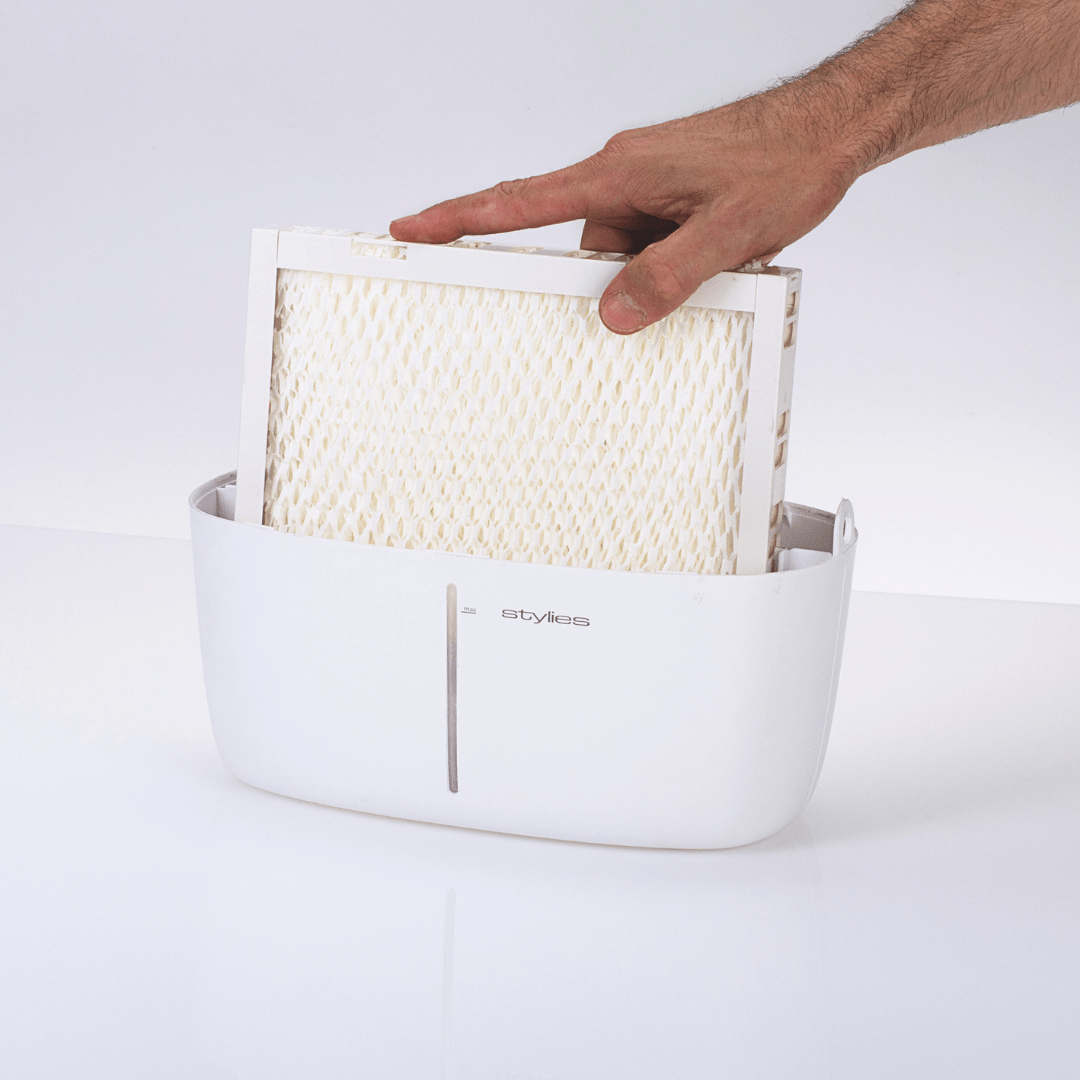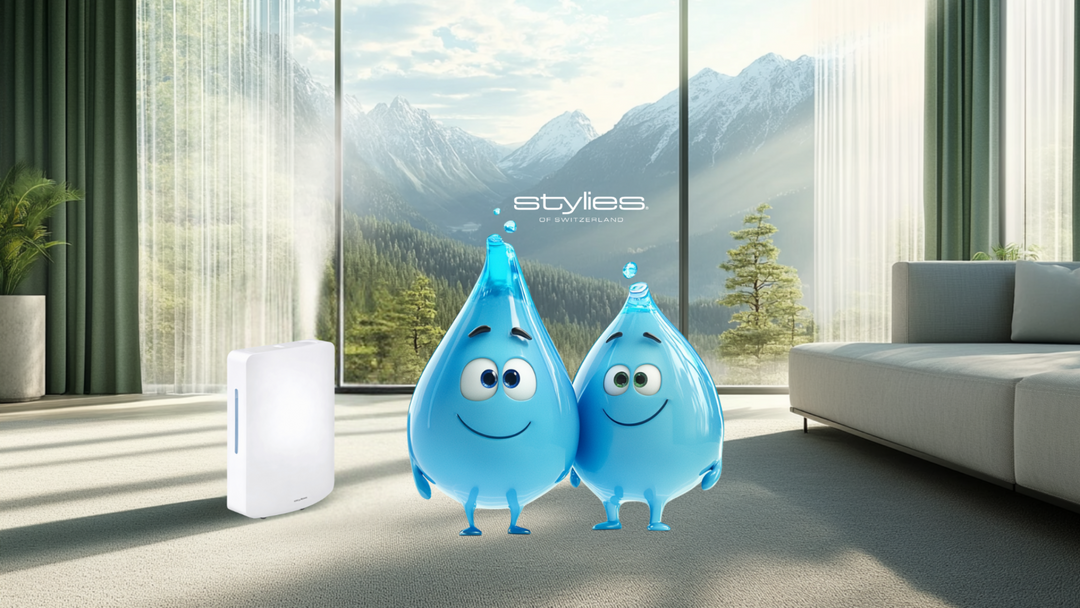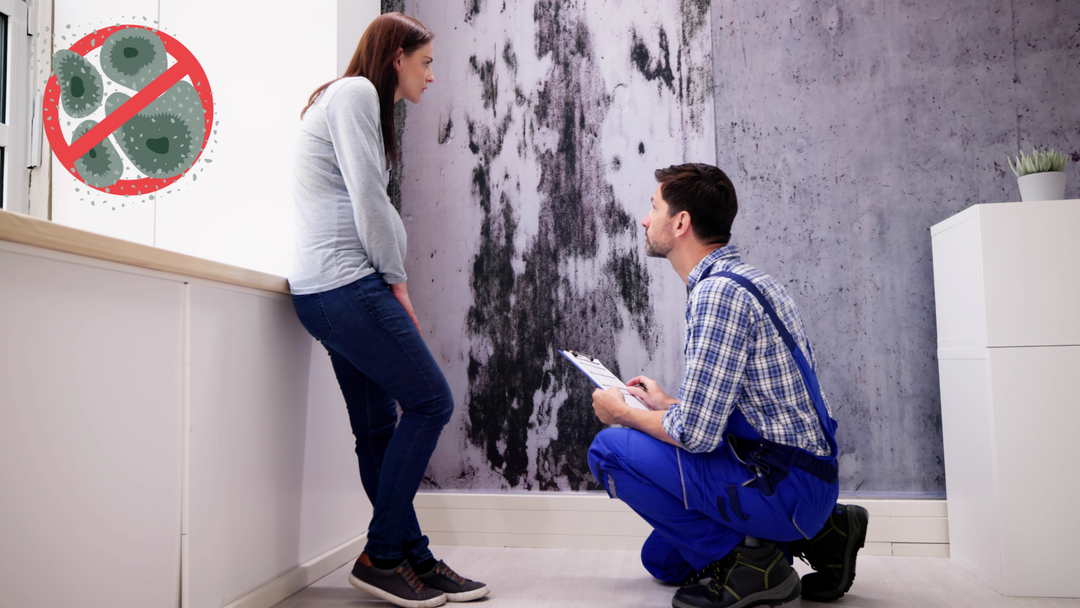From poor indoor climate to a comfortable climate
Healthy indoor air quality is quality of life
We spend two-thirds of our lives indoors.
Studies show that indoor air is often more polluted with pollutants than outdoor air. Therefore, identifying and reducing these pollutants is crucial for a healthy indoor climate . Anyone who wants to improve indoor air quality or the indoor climate must first understand the causes of poor air quality.
Numerous health problems and illnesses are often attributed to poor indoor air quality. Indoor pollutants are generally considered critical when they affect children and adolescents, as well as immunocompromised individuals and those with allergies. A good indoor air quality contributes to prevention and helps ensure an optimal indoor climate .
Pollutants in indoor air can no longer be completely avoided these days. However, they can be reduced through air purification, for example – an effective step toward a good indoor climate . Regular ventilation also helps improve indoor air quality and remove pollutants from the air .
Important indoor air pollution briefly explained
On the one hand, pollutants enter indoor spaces through outside air, such as road traffic. On the other hand, indoor air can be contaminated by furnishings, building materials, paints and varnishes, or floor coverings, as well as by our own activities (breathing, smoking, cooking, etc.). Flu and other illnesses also impact indoor air quality through exhaled aerosols. All of these factors impair a good indoor climate and are responsible for poor air quality .
Viruses and bacteria
Millions of viruses are present in the air and on surfaces and can be easily transmitted through simple contact. Bodily fluids, such as saliva or mucus, are spread as tiny droplets in the dry air through coughing or sneezing.
Scientists have discovered that viruses can be ejected up to several meters when coughing or sneezing and can remain in the air for up to 10 minutes. They can survive on surfaces at room temperature for up to four hours. High humidity indoor air provides an even better breeding ground for bacteria.
Therefore, it's important to regularly clean and disinfect everyday objects and furniture, and briefly ventilate rooms several times a day. This automatically improves the air quality and supports a good indoor climate . Anyone who wants to improve indoor air quality should make this a daily routine to ensure long-term indoor air quality .
Pollen and mites
Flower pollen is the trigger for the most common allergy, hay fever. A single flower can produce millions of pollen particles. The wind often carries them hundreds of kilometers and blows them into every room. When inhaled, they stick to the mucous membranes in the mouth and nose. If the air is too dry, the effect is even worse. Their proteins trigger the well-known allergic reactions. Pollen that most frequently trigger allergies are:
- Grass pollen
- Cereal pollen, especially rye
- Tree pollen, especially birch, hazelnut and alder
- Herb pollen
But it's not just pollen from outside that can cause you problems; mites (especially house dust mites) also live primarily in mattresses and can trigger severe allergic reactions. Targeted measures can help reduce pollutants from the air .
Avoiding contact
When airing out rooms, make sure you open the windows when pollen levels are low. This is typically early morning in the city, and evening in the countryside. Daily vacuuming or damp mopping removes pollen from your home and reduces dust. When purchasing a vacuum cleaner, look for special filter systems that can trap even the finest particles. Otherwise, vacuuming is just a particle generator!
Pollen levels around the house can be reduced somewhat by keeping the lawn as short as possible to prevent the grass from flowering. These measures help maintain a pleasant indoor climate and improve indoor air quality .
Typical sources of dust in living spaces include carpets, open fireplaces, tumble dryers, tobacco smoke, candles, printers, or vacuum cleaners – all of which can directly negatively impact a healthy indoor climate . Anyone who wants to specifically improve indoor air quality should be aware of these sources and avoid them.
Many sources of dust come directly from the living environment and thus pollute your indoor air quality.
One of the number one sources of dust is ourselves: We all lose about 1–2 grams of dead skin cells per day, and they account for 80% of the dust. Consistent cleaning can remove many pollutants from the air and improve indoor air quality .
Dust from the outside air
This dust primarily comes from tire wear, combustion exhaust, and industrial processes. This dust enters our rooms directly through windows and doors. To improve the indoor climate , we should ventilate regularly and use air purifiers.
Whether from outside or inside, dust reduces indoor air quality . Outdoor air quality is almost always better than indoor air quality, so regular ventilation is necessary to maintain a good indoor climate .
Smells
Odors in rooms can cause discomfort and even constitute a source of illness. They settle in clothing and furniture and significantly worsen the indoor climate .
mold spores
Mold is a common problem and is caused by excessive humidity in the air or materials. Often hidden, it can severely pollute indoor air quality . Anyone who wants to improve the indoor climate should take action early – for example, by measuring, removing mold, and adjusting ventilation patterns.
Optimal indoor humidity
What is the optimal humidity in your own four walls and what happens if it is not right?
40 to 60 percent humid air has a direct influence on the indoor climate:
If the indoor air humidity is below 40 percent, it is clearly too low . This negatively impacts our well-being, leading to sleep disturbances and snoring problems. Our respiratory tract and eyes are also strained because the mucous membranes are not sufficiently moistened. Too low humidity causes our skin to become tight and flaky.
Flu viruses survive longer in air with too little humidity, and the risk of infection increases. Musical instruments, wooden furniture, paintings, and parquet floors also suffer from persistently low humidity. They warp and become damaged.
If the humidity meter indicates a value above 60 percent , this will lead to mold growth over time. Mold can cause respiratory problems, eczema, or allergies. Furthermore, house dust mites thrive in excessively humid indoor air. Too much relative humidity can also lead to sleep problems and is particularly unpleasant on hot days because the air becomes stuffy. Therefore, the humidity in your home should be consistently below 60 percent .
Optimal humidity & temperature by room
| Space | Optimal humidity | Optimal temperature |
|---|---|---|
| Living and study room | 40-60% | 20-22°C |
| bedroom | 40-60% | 16-18°C |
| nursery | 40-60% | 20-23°C |
| Kitchen | 50-60% | 18-20°C |
| bathroom | 50-70% | 20-23°C |
| cellar | 50-65% | 10-15°C |
From our own experience we recommend creating a good indoor climate
Use air purifiers with multi-layer filter systems. These allow you to specifically filter pollutants from the air , improve indoor air quality , and influence the indoor climate . This way, you can sustainably support your health and create a long-term, healthy indoor climate . Houseplants are also a good home remedy; they produce oxygen and are important for good air circulation and good indoor air quality. The combination of proper ventilation and good humidity in your home helps combat poor indoor air quality.
Expert knowledge from Stylies, the Swiss manufacturer of high-quality air conditioning units, in cooperation with Daniel Gwerder (CDO Tavora Brands AG).
For over 20 years, Daniel Gwerder has been committed to healthy indoor air and shares his in-depth knowledge here – understandable, preventative and practical.
👉 You can find out more about Daniel on LinkedIn
👉 Discover Stylies air conditioners on Stylies


